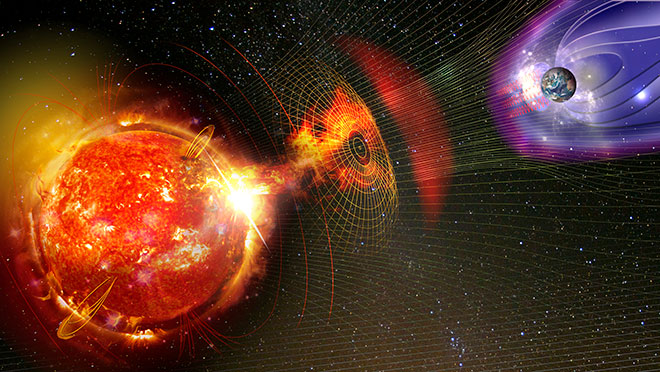Why BC Hydro is on alert for geomagnetic storms

Once mysterious, sun-initiated surges now better understood by utilities
The world wasn't quite ready for the geomagnetic storm that arrived just over three decades ago. When the northern lights were spotted as far south as Texas and Florida on March 13, 1989, some wondered if – with memories of the Cold War still strong – that a nuclear first strike had been launched. Others thought maybe it had something to do with a U.S. space shuttle mission.
Neither was true, but the geomagnetic storm had a dramatic effect in Quebec, which lost power for nine hours after the variations in the Earth's magnetic field tripped circuit breakers in Hydro-Québec's power grid. Another storm on August 16, 1989, halted all trading on the Toronto Stock Exchange.
Electrical utilities now have programs in place to reduce the risks associated with geomagnetic storms, including the one that struck Earth on December 11, 2020.
"We were expecting a medium to strong storm, but the [National Oceanic and Atmospheric Administration] downgraded the storm," says BC Hydro spokesperson Mora Scott. "Even so, we prepare for all geomagnetic storms. They can cause serious damage to high voltage transmission systems, leading to outages."

The science of a geomagnetic storm, and how BC Hydro prepares for them
Solar magnetic storms are gusts of charged particles that come from the sun that fluctuate in frequency and intensity. And they're not uncommon.
"These types of storms go through 11-year cycles with about 100 events ranging in intensity happening over a decade," says BC Hydro spokesperson Scott.
The storms can produce the visually stunning northern lights (aurora borealis), sometimes in places that have seldom or ever seen them before, but they can also affect our power system, as they produce voltages and circulating currents in the earth.
BC Hydro's system control team is prepared for such storms, with plans to manage and monitor operations during what are sometimes referred to as "space storms." When the team got an alert from the Space Weather Prediction Center in the leadup to the December storm, they knew what to do.
"What we want to do is make the system as resilient as possible to avoid equipment outages that could lead to a blackout," explains BC Hydro's senior system control manager Brett Hallborg. We'll assess planned equipment outages across the system, recalling them as appropriate, to increase our resiliency."
BC Hydro has a good track record of dealing with solar magnetic storms – we haven't experienced any serious damage or outages due to these storms in the past. System protections include series capacitors on most of BC Hydro's long distance transmission lines, which limit the spread of any effects of the magnetic storms.
Get an emergency kit, as storms of all kinds can cause power outages
While you can't specifically prepare for solar magnetic storms, it's always a good idea to have a fully stocked emergency kit on hand in our home. And at the very least, it should include a flashlight, extra batteries, a first aid kit, food and water.
Build your emergency kit with enough supplies to last at least 72 hours. And tell everyone in your household where to find it, as you don't want to be scrambling for supplies in the dark. Make sure the kit is easy to carry – a backpack, duffel bag or suitcase with wheels are good options – and pull it out to update it each year.
Find out more information about building an emergency kit.
Related:
- Food, water, flashlight? Are you prepared for a power outage?
- All about geomagnetic storms (Space Weather Prediction Center)